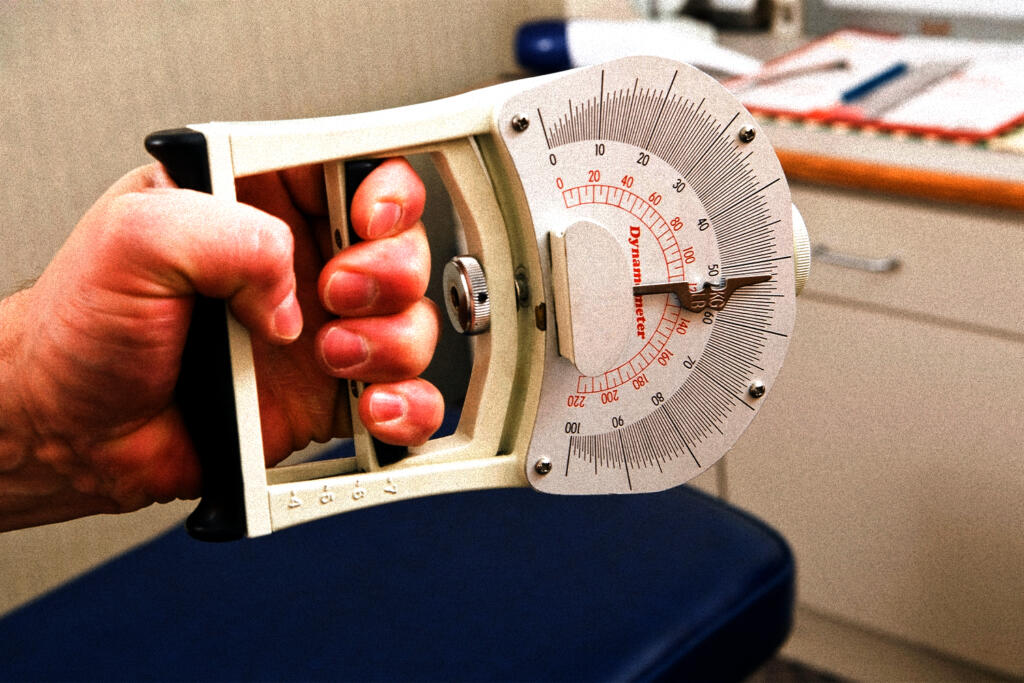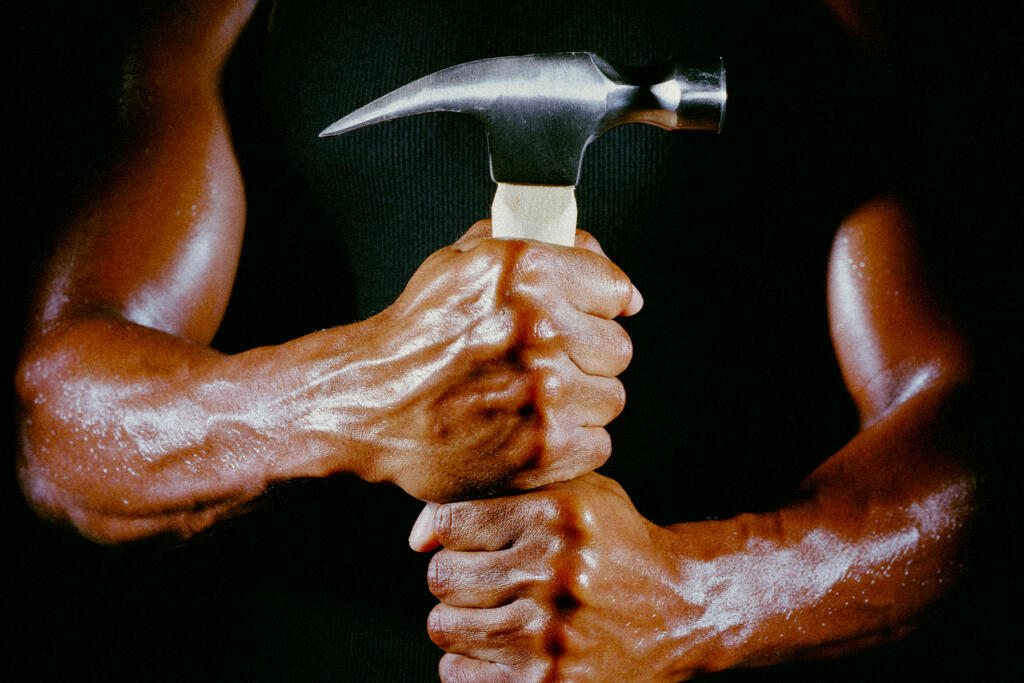Learning how to get stronger hands doesn’t seem important, at first. When you signed up for your gym membership, you probably didn’t daydream about having the world’s strongest wrists.
However, the decision to increase grip strength could be one of the most valuable choices you ever make.
The reality is you use your hands for everything. They’re there to help you lift weights, improve your cardio on the rowing machine, and balance yourself when you’re cycling.
Your hands don’t just come into play at the gym either – you need them for a huge number of everyday tasks, like checking your phone, combing your hair, or lifting boxes.
Yet, despite the obvious importance of our hands (and their grip), a lot of us don’t give them the attention and care they deserve.
Today, we’re going to discuss how to get stronger hands, and increase grip strength.
How do I make my hands stronger?
How to strengthen grip
Figuring out how to get stronger hands starts with understanding how the muscles in your hands, wrists, and forearms actually work. Increasing grip strength doesn’t just mean working out your fingers.
Your grip relies on a lot of different muscles and bones, located all throughout the lower portion of your arm.
When you grab a set of weights, or pick up a box, you’re using your flexor digitorum superficialis, your flexor policus longus, and your flexor digitorum profoundus, as well as all those important tendons and muscular bits in your fingers too.
Working singular muscle groups isn’t easy. Instead, if you want to know how to improve grip strength, the best bet is to work on powering up different kinds of grip.
Such as:
- Supporting grip: The kind of grip you use to lift something with your fingers.
- Pinching grip: The act of grasping something with your thumbs and fingers.
- Extension grip: The act of opening your fingers and thumb.
- Crushing grip: The act of closing fingers against a source of resistance (like when you crush an empty can).

How to get a stronger grip
Measure first
Using something called a handgrip dynamometer, you can measure the force of your grip by examining the isometric strength of your forearm and hand muscles.
Before you start working on getting stronger hands, it’s best to perform three squeezes from both hands on one of these devices. This should give you a benchmark to work from. After all, how do you know if you’re improving grip strength if you don’t know where you started?
Your grip measurement will fall into one of the following categories:
- Poor: 88 to 95 lbs.
- Below average: 96 to 104 lbs.
- Average: 105 to 113 lbs.
- Above average: 114 to 122 lbs.
- Very good: 123 to 141 lbs.
- Excellent: 141 lbs. and above
How to train grip strength
Hand strengthening exercises
Once you know your baseline level, the best way to improve grip strength is to work on hand exercises. You can do hand exercises with a set of hand grips, tension balls, and finger exercises, or you can just work on your hand performance at home.
Some of the easiest ways to increase grip strength and get stronger hands include:
Deadlifting
Strength lifting isn’t just a great way to improve your biceps and chest muscles, it helps with grip strength too. Start small, with basic weights that aren’t going to cause too much discomfort, and gradually work your way up.
You can use a variety of different styles of weight to change the way you position your grip.
Farmer’s walks
The great thing about this exercise is you can do it virtually anywhere. Pick up something heavy, like some big bottles of water with a grip section attached to it. Once you have your weights, walk around for as long as you can while holding the weight.
You can put the weights down from time to time when you’re tiring out, then start again.
Squeezing exercises
Virtually any kind of squeezing exercise is going to do wonders for your hand strength. That’s why most grip strengthening tools revolve around the squeezing action. You can use metal grips, plastic balls, or anything else which can hold up to some serious squeezing.
The aim of this exercise is to hold your grip for as long as possible, then release. On average, you should be making a fist at least 10 to 15 times with each hand, exerting pressure as you go.
Pull ups
Learning how to get stronger hands is often about working the muscles in your forearms, wrists, and fingers. One of the best ways to do this is with bodyweight exercises.
Pull ups can be the best way to increase grip strength, because you have to use all of your hands and arms to pull yourself up during the exercise. You can also explore alternatives to pull-ups, like dead hangs, where you simply hang from a bar for as long as you can without dropping.
Finger press ups
These exercises are tough. If you’re still having trouble with your hand strengthening tools, or hand grips, you should probably wait a while longer before using finger press ups. This advanced exercise is simple enough in theory, you just do a press up, with your fingers, rather than your entire hand.
Take it slow when you’re working on this exercise. You don’t want to push yourself too fast and end up breaking or injuring a finger.
Play some sports
There are plenty of great sports where your grip can come into play. Basketball forces you to use your fingers and palms in the best way to maneuver a ball. Baseball requires the perfect grip on a bat.
Experimenting with sports can help you to use your hands in more managed, and precise ways. This will eventually have a positive impact on your hand and grip strength.

Quick wins for stronger hands
If you’re keen to build up stronger hands as quickly as possible, the best thing you can do is implement a number of hand exercises and strong hand tools into your routine. If you work on your hand and grip strength constantly, you’ll see results a lot faster.
Here are some quick tips to get you on the right path:
- Invest in hand grips: A set of hand grips will help to focus your exercise routines on your hands and wrists when you’re first getting started. Hand grips will also make you more mindful of where the muscles you use when you grip things are.
- Stretch regularly: If you suffer from tight and achy wrists because of sitting at a desk all day for work, make sure you engage in regular stretches. Place your palms on the desk and pull your fingers back gently to stretch them out. You could also lean forward on your hands to stretch your fingers this way.
- Rotate your wrists: Remember mobility is key to strength too. Make sure you rotate your wrists every so often after you’ve been exercising or working at a keyboard for a while. The more fluid and well-lubricated your wrists are, the easier it’s going to be to do the hand exercises to strengthen your grip.
Remember, if you do end up injuring your hand in anyway, make sure you speak to a doctor and follow all of the right precautions to help your hand and wrist heal correctly. Rushing into exercises too fast can damage your hands long-term.
How to get stronger hands
It’s easier than you think
The quest to improve grip strength is something a lot of people are dealing with these days. When you first start working out, it’s easy to forget how important your grip really is to your overall performance, your balance, and your ability to endure regular exercise.
However, as you continue to work with weights and other bodyweight exercises, your focus on hand strength should grow.
The good news is there are various hand exercises, strong hand tools, and routines you can use to improve the performance of your wrists, forearms, and fingers.
Sometimes, the path to stronger hands starts with something simple, like working on clay to improve dexterity, using hand grips, and indulging in the occasional pull-up routine.
As your hands get stronger, you’ll find new ways to challenge them, and keep your muscles growing. The result should be a better grip, and an enhanced workout experience.
Blitz yourself better!
Now read these:
—The benefits of hand grips.
—Get a grip with these grip strengtheners.
—The ultimate workout water bottle.
—How to motivate yourself to workout.
—Lose your dad bod today!
Just so you know… This article contains affiliate links. The commission we earn helps to cover our costs, and comes at no additional cost to you. For more information on our affiliate program, please refer to our disclosure policy.
